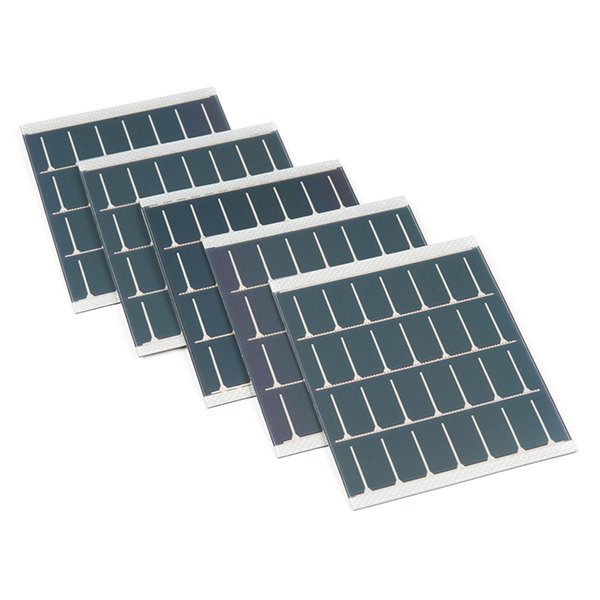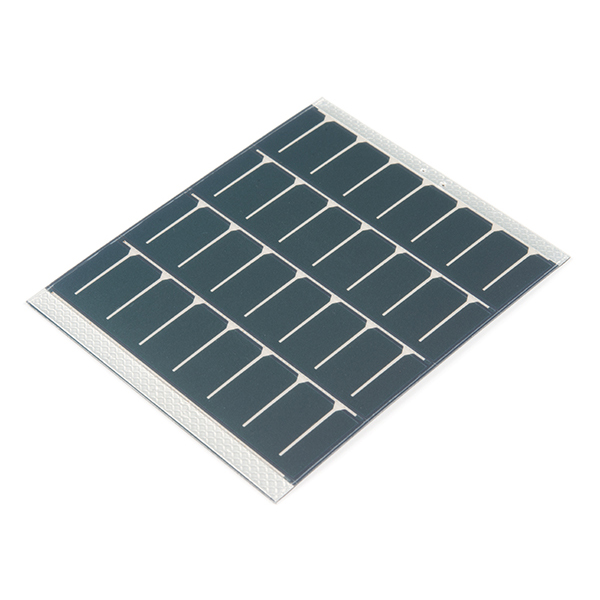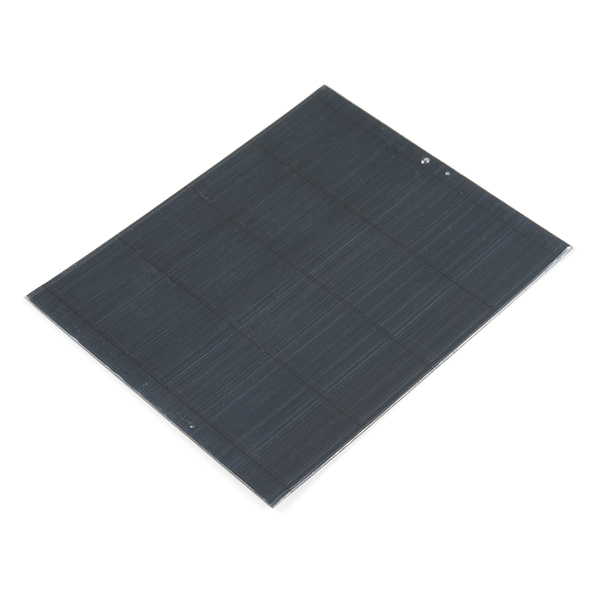PowerFilm Solar Panel - 50mA@4.8V w/PSA & Kynar (5 Pack)
Did you know you have a practically unlimited source of energy, half a day, fully available to power your project? This five pack of PowerFilm Solar Panels are lightweight, paper thin, power solutions protected by being sandwiched in between PSA and Kynar polymers that can be easily integrated with your electronics to provide you with solar recharging or direct powering methods!! Even while bending and manipulating this solar panel, you will still be able to pull your full allotment of power from it.
These specific panels are each capable of 50mA at 4.8V which equates to about 0.2W of power. To incorporate these sturdy solar panels into your project simply melt the PSA and Kynar protecting the two power rails on the opposite sides of the array with your iron, then simply solder on your desired cables, leads, or another connection medium.
Thanks to the Kynar and PSA polyer protecting these solar panels, they are suitable for outdoor use. It is important to note, though, that each of these panels is die-cut making the edges susceptible to some moisture ingress. So as long as you make sure that the panels are in some sort of water-proof container it could work just fine years to come!
- 5x PowerFilm Solar Panel - 50mA@4.8V w/PSA & Kynar
- Power: 0.24W
- Operating Voltage: 4.8V
- Operating Current: 50mA
- Dimensions: 3.5in x 2.8in (88.9mm x 71.1mm)
- Weight: 4.75g
Note: Each of these values are for the individual panels in this pack.
PowerFilm Solar Panel - 50mA@4.8V w/PSA & Kynar (5 Pack) Product Help and Resources
Core Skill: Soldering
This skill defines how difficult the soldering is on a particular product. It might be a couple simple solder joints, or require special reflow tools.
Skill Level: Rookie - The number of pins increases, and you will have to determine polarity of components and some of the components might be a bit trickier or close together. You might need solder wick or flux.
See all skill levels
Core Skill: Electrical Prototyping
If it requires power, you need to know how much, what all the pins do, and how to hook it up. You may need to reference datasheets, schematics, and know the ins and outs of electronics.
Skill Level: Competent - You will be required to reference a datasheet or schematic to know how to use a component. Your knowledge of a datasheet will only require basic features like power requirements, pinouts, or communications type. Also, you may need a power supply that?s greater than 12V or more than 1A worth of current.
See all skill levels
Comments
Looking for answers to technical questions?
We welcome your comments and suggestions below. However, if you are looking for solutions to technical questions please see our Technical Assistance page.
Customer Reviews
2 out of 5
Based on 1 ratings:
Way less than what you pay for
So let me preface my review with this: I bought this product for prototyping a low-cost, long-endurance high altitude vehicle (weather balloon payload), to be used with the Sunny Buddy MPPT charging circuitry. As always with Sparkfun products, the customer service in purchasing and receiving the product was awesome.
However, that leaves us with the product...
1.) When I got my panels, I had to tab them to be able to make them useful. In the informative video overviewing this family of PowerFilm panels, they mentioned that for this product and the smaller cells that we would either a) use a soldering iron to remove the protective film or b) use a blade or sharp object to scrape it off. I thought that since Sparkfun mentioned this, it would be easy and harmless to the panels. When I did it, i tried both the melting and scraping method, but ultimately deicded that the scraping method was impossible without severely damaging a cell. The melting method means you have to burn the coating to reveal the tab. For me, this made the entire structure separate (the backing, the tab, and the cells). This is just poor product design. The larger panel has tabs that protrude from the structure so you don't have to damage the part that shouldn't be touched. It almost seems more worth it to buy bare silicon cells that aren't flexible and make your own panel if you have to damage your product (burning the weather proofed portion) and still have to tab it.
2) This is part is more worth a read if you don't care about damaging the coating. When I got my panels, I was stoked to start playing around with them and making prototypes. However, after burning away the coating to tab them/solder jumper wires, I wanted to measure the performance of the panels I had setup. With my multimeter I was recording that one panel produced 3.7V, and the other produced 7.2V in the same sunlit conditions. This means that the panels aren't consistent with one another in the same package grouping. For anything that requires reliable panels, I don't think I would trust these where I stand now without seeing some better manufacturer specs.
Overall, if you want these panels to just mess around with, I would consider them good, but overpriced. You can get cells on eBay in packages of 100 for $20 and make a more powerful panel for just a little more effort.
For my frustrations in getting this product setup (given the relatively high price I'm paying for them + shipping), I give it 2 stars. Would love to chat more with the Sparkfun team members that work with this product and hearing what they think about the product and any tips for better prepping my remaining panels for use without damaging them.






Why are the panels more expensive in a pack of 5 than individually? I suspect that you meant to have 6 in the pack, at 5x the single Q price?
Valid point. I submitted an issue explaining this.